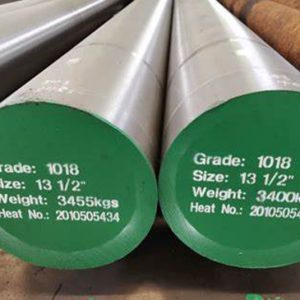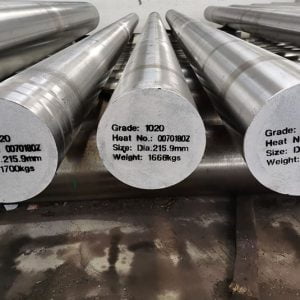Introduction
High carbon steel grades are integral in various industrial applications due to their superior hardness and strength. Whether you’re in the automotive industry, construction, or tool manufacturing, selecting the appropriate high carbon steel grade is crucial for the success of your project. This comprehensive guide will explore different high carbon steel grades, their properties, and applications, helping you determine which grade is best suited for your needs.
Understanding High Carbon Steel Grades

What are High Carbon Steel Grades?
High carbon steel grades contain a higher percentage of carbon compared to other steel types, typically ranging from 0.6% to 1.0% carbon content. This higher carbon content results in a harder and stronger steel, but it also makes the steel less ductile and more difficult to weld. These properties make high carbon steel ideal for cutting tools, springs, and high-strength wires.
Key Properties of High Carbon Steel Grades
The primary properties that differentiate high carbon steel grades include:
Hardness: The ability to resist deformation.
Tensile Strength: The maximum stress that the steel can withstand while being stretched or pulled.
Ductility: The ability to deform under tensile stress.
Wear Resistance: The ability to resist wear and abrasion.
Machinability: The ease with which the steel can be cut or shaped.
Common High Carbon Steel Grades
Grade 1050
Grade 1050 high carbon steel contains 0.50% carbon and is known for its excellent tensile strength and toughness. It is often used in the manufacturing of blades, cutting tools, and springs.
Grade 1060
Grade 1060 contains 0.60% carbon and is renowned for its high strength and hardness. This grade is commonly used in the production of swords, large knives, and automotive parts.
Grade 1075
With a carbon content of 0.75%, grade 1075 is highly durable and offers excellent wear resistance. It is frequently used in the making of agricultural tools and heavy-duty machinery parts.
Grade 1080
Grade 1080 high carbon steel, containing 0.80% carbon, is known for its exceptional hardness and high tensile strength. It is widely used in the production of high-strength wires, industrial blades, and cutting tools.
Grade 1095
Grade 1095, with 0.95% carbon, is one of the hardest high carbon steel grades available. It is highly wear-resistant and is used for making cutting tools, springs, and high-stress applications.
Comparing High Carbon Steel Grades
Table of High Carbon Steel Grades
To help you compare different high carbon steel grades, here is a table summarizing their key properties:
| Grade | Carbon Content (%) | Hardness | Tensile Strength (MPa) | Ductility | Wear Resistance | Common Applications |
|---|---|---|---|---|---|---|
| 1050 | 0.50 | Medium | 650 | High | Medium | Blades, cutting tools, springs |
| 1060 | 0.60 | High | 750 | Medium | High | Swords, large knives, automotive parts |
| 1075 | 0.75 | High | 800 | Medium | Very High | Agricultural tools, machinery parts |
| 1080 | 0.80 | Very High | 850 | Low | Very High | High-strength wires, industrial blades, tools |
| 1095 | 0.95 | Extremely High | 900 | Very Low | Extremely High | Cutting tools, springs, high-stress applications |
Performance Analysis
Grade 1050: Versatility and Toughness
Grade 1050 is versatile and tough, making it suitable for a variety of applications, including blade manufacturing and spring production. Its balance of hardness and ductility allows it to withstand significant stress without breaking.
Grade 1060: Strength and Durability
Grade 1060 offers excellent strength and durability, making it ideal for heavy-duty applications such as automotive parts and large knives. Its higher carbon content compared to grade 1050 provides increased hardness and wear resistance.
Grade 1075: Durability and Wear Resistance
Grade 1075 is known for its durability and wear resistance, making it perfect for agricultural tools and heavy machinery parts. Its higher hardness level ensures that it can withstand significant wear and tear.
Grade 1080: Hardness and Tensile Strength
Grade 1080 stands out for its exceptional hardness and high tensile strength, making it ideal for high-strength wires and industrial cutting tools. However, its lower ductility means it is less suitable for applications requiring significant bending or deformation.
Grade 1095: Extreme Hardness and Wear Resistance
Grade 1095 offers the highest hardness and wear resistance among the common high carbon steel grades. This makes it ideal for cutting tools and springs used in high-stress environments. However, its low ductility and machinability can make it challenging to work with.
Choosing the Best High Carbon Steel Grade for Your Project
Assessing Project Requirements
When selecting a high carbon steel grade for your project, consider the following factors:
- Application: Determine the primary use of the steel (e.g., cutting, structural support, wear resistance).
- Strength and Hardness: Match the required strength and hardness to the demands of your project.
- Ductility: Assess the need for flexibility and deformation.
- Wear Resistance: Evaluate the environmental conditions and wear the steel will endure.
- Machinability: Consider the ease of shaping and cutting the steel during manufacturing.
Recommendations for Specific Applications
- Cutting Tools: For manufacturing blades and cutting tools, grades 1080 and 1095 are recommended due to their high hardness and wear resistance.
- Automotive Parts: Grade 1060 is suitable for automotive parts due to its strength and durability.
- Agricultural Tools: Grade 1075 is ideal for agricultural tools that require durability and wear resistance.
- Springs: Grade 1050 and 1095 are excellent choices for springs, depending on the required balance of toughness and wear resistance.
Maintenance and Handling of High Carbon Steel Grades

Proper Handling Techniques
To maintain the integrity of high carbon steel, proper handling techniques are crucial:
- Avoid Moisture: Store in a dry environment to prevent rust and corrosion.
- Use Protective Coatings: Apply oil or protective coatings to the surface.
- Handle with Care: Avoid dropping or striking the steel to prevent surface damage.
Regular Maintenance
Regular maintenance ensures the longevity and performance of high carbon steel components:
- Cleaning: Clean regularly to remove dirt and debris.
- Inspection: Periodically inspect for signs of wear or damage.
- Sharpening: Sharpen cutting tools as needed to maintain their effectiveness.
Conclusion
Choosing the right high carbon steel grade for your project involves understanding the specific properties and applications of each grade. By considering factors such as hardness, tensile strength, ductility, and wear resistance, you can select the grade that best meets your project’s needs. Whether you’re manufacturing cutting tools, automotive parts, or agricultural equipment, there is a high carbon steel grade that will provide the necessary performance and durability.
FAQ
What is the primary advantage of high carbon steel grades?
High carbon steel grades offer superior hardness and strength compared to lower carbon steels, making them ideal for applications requiring high wear resistance and durability.
Can high carbon steel grades be welded?
Welding high carbon steel grades can be challenging due to their high carbon content, which can lead to brittleness and cracking. Preheating and post-weld heat treatment are often required to ensure a strong weld.
How do I prevent high carbon steel from rusting?
To prevent rust, store high carbon steel in a dry environment, apply protective coatings, and perform regular maintenance to keep the surface clean and free of moisture.
What factors should I consider when choosing a high carbon steel grade?
Consider the specific application, required strength and hardness, ductility, wear resistance, and machinability of the steel to choose the appropriate grade for your project.
Are high carbon steel grades suitable for outdoor applications?
Yes, high carbon steel grades can be suitable for outdoor applications, but they require proper protective measures such as coatings and regular maintenance to prevent rust and corrosion.





